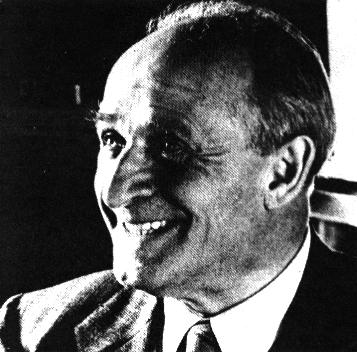
Samuel Glasstone
Encyclopedia

Textbook
A textbook or coursebook is a manual of instruction in any branch of study. Textbooks are produced according to the demands of educational institutions...
s on physical chemistry
Physical chemistry
Physical chemistry is the study of macroscopic, atomic, subatomic, and particulate phenomena in chemical systems in terms of physical laws and concepts...
, reaction rate
Reaction rate
The reaction rate or speed of reaction for a reactant or product in a particular reaction is intuitively defined as how fast or slow a reaction takes place...
s, nuclear weapon
Nuclear weapon
A nuclear weapon is an explosive device that derives its destructive force from nuclear reactions, either fission or a combination of fission and fusion. Both reactions release vast quantities of energy from relatively small amounts of matter. The first fission bomb test released the same amount...
s effects
Effects of nuclear explosions
The energy released from a nuclear weapon detonated in the troposphere can be divided into four basic categories:*Blast—40-50% of total energy*Thermal radiation—30-50% of total energy...
, nuclear reactor
Nuclear reactor
A nuclear reactor is a device to initiate and control a sustained nuclear chain reaction. Most commonly they are used for generating electricity and for the propulsion of ships. Usually heat from nuclear fission is passed to a working fluid , which runs through turbines that power either ship's...
engineering, Mars
Mars
Mars is the fourth planet from the Sun in the Solar System. The planet is named after the Roman god of war, Mars. It is often described as the "Red Planet", as the iron oxide prevalent on its surface gives it a reddish appearance...
, space
Outer space
Outer space is the void that exists between celestial bodies, including the Earth. It is not completely empty, but consists of a hard vacuum containing a low density of particles: predominantly a plasma of hydrogen and helium, as well as electromagnetic radiation, magnetic fields, and neutrinos....
sciences, the environmental effects of nuclear energy and nuclear testing
Nuclear testing
Nuclear weapons tests are experiments carried out to determine the effectiveness, yield and explosive capability of nuclear weapons. Throughout the twentieth century, most nations that have developed nuclear weapons have tested them...
. One reviewer describe Glasstone as "perhaps one of the best technical writers of the last century."
Samuel Glasstone was born on May 3, 1897. He received two doctorates, in 1922 and 1926 (PhD and DSc), in chemistry at London University.
Perhaps his best known book, co-authored with Philip J. Dolan
Philip J. Dolan
Philip J. Dolan graduated in physics from West Point in 1945, was assigned to the Manhattan Project, Los Alamos, in 1948, and received his MSc in physics from the University of Virginia in 1956. Dolan held U.S. Army posts ranging from 'Instructor in Nuclear Weapons Employment' to 'Nuclear Effects...
, was The Effects of Nuclear Weapons, which came out in three editions between 1950 and 1977 (originally titled The Effects of Atomic Weapons). The book, published by the US government, is considered one of the most authoritative texts on the effects of nuclear explosions. One of his other popular books was The Sourcebook on Atomic Energy, published in 1950, and translated in many countries.
External links
- Collection of information on Samuel Glasstone and one of his co-authors, including photograph, career, awards, some of his books, information and quotations about his work, etc.
- The source of this article is wikipedia, the free encyclopedia. The text of this article is licensed under the GFDL.

